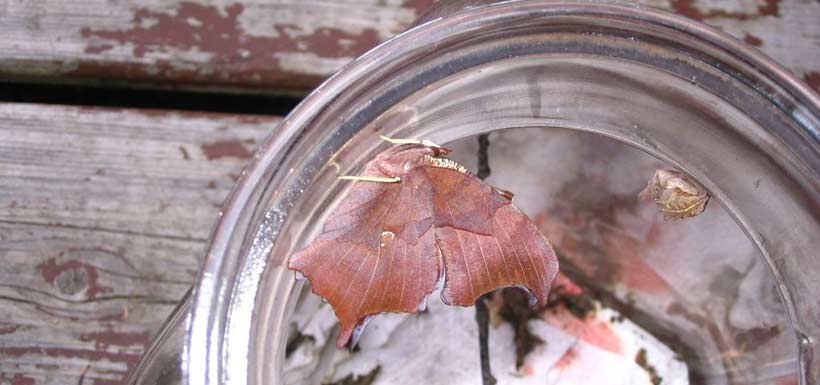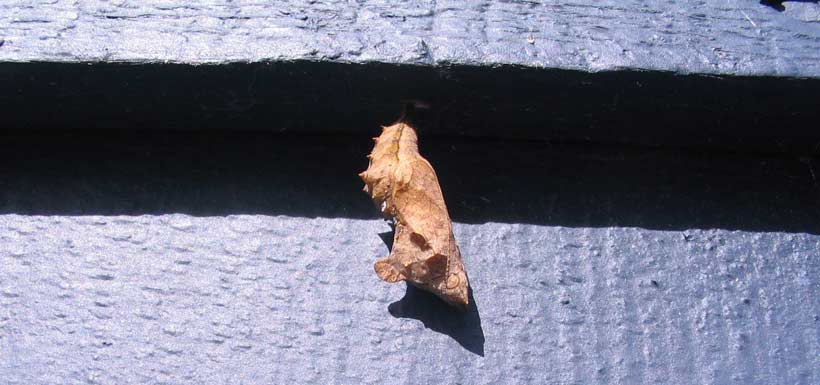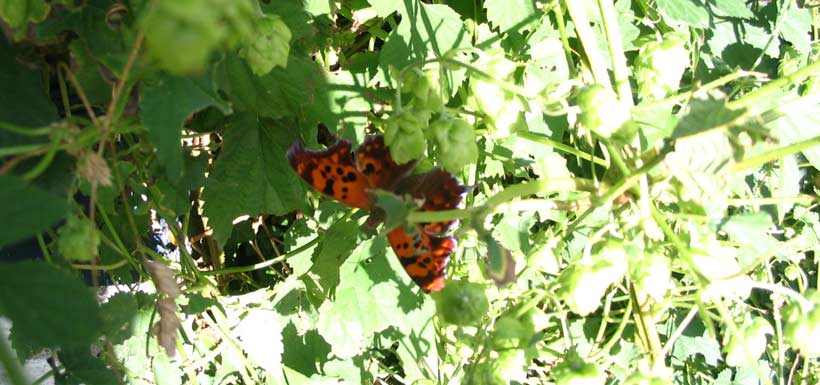Butterfly metamorphosis
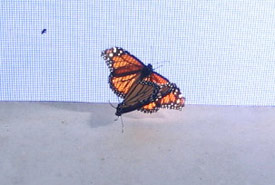
Mating monarch butterflies, Butterfly Garden at Museum of Science and Industry (MOSI) Tampa, Florida (Photo by Joyce Graham Fogwill)
A few summers ago I watched and photographed the metamorphosis of a butterfly (we weren't sure if the species is a green comma or question mark) at Cape Broyle, Newfoundland. During my visit, I became friends with my seven-year-old neighbour, M., a young nature lover and budding naturalist, who reminded me of myself at that age. She was fascinated and very attentive as I explained that the pollinating activities of butterflies, bumblebees and other insects, produce some of the fruits that we all enjoy. She had collected caterpillars from hops plants growing on the side of her house, placed them in a jar and was waiting patiently for the emergence of the beautiful butterfly – the transformation we call metamorphosis.
Metamorphosis may be defined as a fundamental change in the structure and habits of an insect that accompanies the transformation of a larva into an adult during the insect's normal growth cycle. Some insects like the butterfly or bumblebee undergo complete metamorphosis with distinct stages – egg, larva, pupa and adult – that look completely different from each other. Other insects, like grasshoppers and termites, undergo incomplete metamorphosis or gradual metamorphosis, transforming from egg to nymph to adult. The nymphs resemble the adults, share the same habitat and food, and have similar behaviours. In winged insects with incomplete metamorphosis, wings develop as the nymph molts.
Together, M. and I explored the fascinating process of metamorphosis.
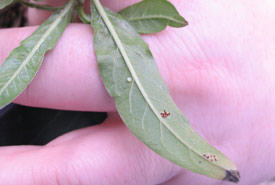
Monarch butterfly egg laid on the underside of a leaf, Butterfly Garden, Museum of Science and Industry (MOSI), Tampa, Florida. (Photo by Joyce Graham Fogwill)
Egg:
I couldn’t find eggs laid by butterflies in the Newfoundland garden, but for information purposes, here are images of monarch butterflies mating and a monarch egg. The adult female butterfly lays her tiny eggs on the leaves of the host plant. With monarch butterflies, they always lay their eggs on milkweed species!
The eggs hatch within three to five days into a larva or caterpillar.
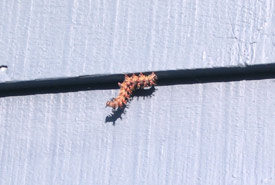
Butterfly larva resting on the wall of the house (Photo by Joyce Graham Fogwill)
Larva or caterpillar:
This stage lasts five to 10 days. The caterpillars have chewing mouth parts, tiny eyes, stubby legs, short antennae and they eat and eat and eat. Most species eat only a single or single group of related plant species. The larva keeps eating and growing and forms a new skin underneath, causing the old skin to split. This is called molting – changing its skin to accommodate its growing size. After each molt the larva is called a 1st, 2nd, 3rd and 4th instar.
The larva then finds a place to rest, such as the wall of the house.
A silk thread-spinneret is formed from a hole below its mouth and this is used to spin a pad to which the forming pupa attaches. After the final molt the skin splits open to reveal a dull straw coloured...
Larva and pupa (chrysalis):
The pupa is re-formed into a butterfly in seven to 10 days. The pupal case splits open and the adult butterfly struggles out.
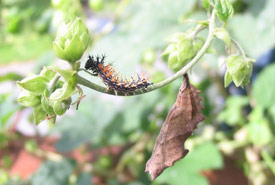
A larva and pupa on hops plant (Photo by Joyce Graham Fogwill)
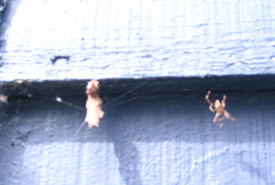
Spider spins a web near an emerging butterfly (Photo by Joyce Graham Fogwill)
Adult butterfly (imago):
The body of pupa has now been transformed into the adult butterfly, having a segmented body with six legs, two antennae, wings and sucking mouth parts. The wings at first are soft and wet and the butterfly rests as it pumps fluids through its veins to its wings, which then expand and harden.
Some species of butterflies live for about 10 to 14 days, while others live much longer. Some butterfly species hibernate during winter and may live for several months, while others like the monarch butterfly migrate hundreds of miles to warmer climates.
M. and I became kindred spirits that summer. After returning home from vacation, I was pleased to hear that M. took one of my Bubs the Bumblebee children's books to her school.
She presented, in her way, the wonders of her garden and her teacher and classmates read and discussed the fascinating interactions in nature.

